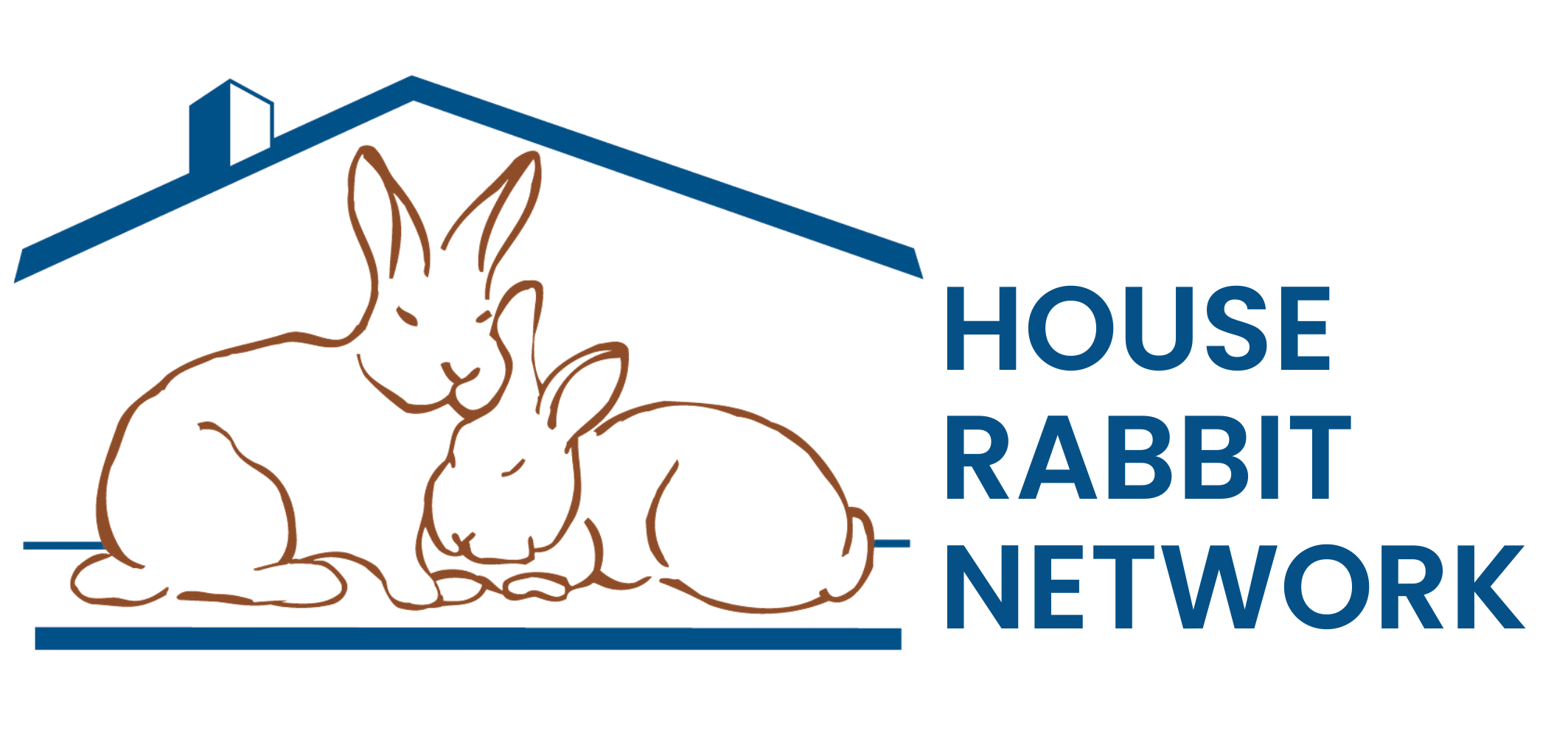Jenna’s Story: A Williamsport Bun One Year Later

The call to the meat truck was days, if not hours, away when the word went out over the Internet that rabbits needed to be saved from a meat farm that was closing it’s doors. Jenna and about 47 of her siblings and cousins would be slaughtered and shipped out for processing.
A House Rabbit Network volunteer drove to Pennsylvania and loaded 14 rabbits in carriers into her vehicle. It was a long, hot five-hour drive to Massachusetts with the air conditioner set to full blast all the way.
Jenna was one of the lucky buns saved that day. After initial examinations were made, she and the other thirteen buns were treated for a heavy coccidian infection. With good food, clean water and hay, a safe environment and lots of love, Jenna thrived.
Then, one day when she was only 8 months old her foster Mom noticed one of her eyes was cloudy. The next day an ophthalmologist saw Jenna. There was bad news. Jenna had developed cataracts in both of her eyes and was rapidly going blind. “How could this be?” I thought.
The doctor explained that there is a genetic link to early onset glaucoma in some New Zealand Whites. Jenna was a Californian mix. Could she have NZ White DNA? Most likely the answer is yes. Jenna wasn’t bred to be a purebred; she was bred for her meat.
Today, Jenna is only 16 months old and will be totally blind in just a few short months. Until that time, she receives drops of Xalatan in her eyes twice a day. The medicine helps keep the pressure in Jenna’s eyes at a reasonable level and keeps pain at bay. It’s costly, but her foster Mom is determined to keep her as comfortable as possible.
Surgery to correct the cataracts is not possible for two reasons, according to Jenna’s doctor. Jenna has red eyes and cataract surgery does not work on red-eyed animals. The other issue is that cataract surgery causes inflammation and rabbits react badly to eye inflammation. Periodic eye pressure tests and the health of her eyes will determine whether or not her eyes will eventually have to be removed.
Jenna is being prepared for her impending disability. She is free-range, so different textured rugs under her feet tell her where she is in the house, where her food and water bowls are and where her litter box is located. The house cat now wears a jingle bell so she doesn’t sneak up on Jenna and frighten her. Humans in the house wear different sounding bells or chimes so she knows who is approaching. Strangers are not allowed to approach her because she won’t know who or what they are and she may react badly.
Jenna recently befriended a companion rabbit, a sick, elderly Sanctuary bun named Salt. I guess you could say he’s her seeing-eye bunny. You can often find them cuddling and napping together and it’s so sweet to see them kissing each other’s face and giving comfort to each other.
Jenna’s foster Mom searched blind dog websites for ways to help Jenna move around her space. Most of the information for blind dogs can be applied to blind rabbits.
Jenna’s adoption prospects are uncertain, but her foster Mom is dedicated to her and will keep her forever if necessary. Jenna will always have a home in the loving arms of the House Rabbit Network.
Techniques For Blind Rabbits
Talk to your bun when you enter the room. This lets them know who is there.
If a bun is “lost”, bring her back to a familiar spot, like her feeding area.
Use different textured and sized area rugs to help the bun identify her location.
Don’t move furniture around or set something unfamiliar to her on the floor, like a box or a bag.
Don’t let strangers suddenly approach her. A frightened rabbit could bite or crash into something while trying to flee.
Get the rabbit used to a routine so it knows what to expect (i.e., it knows the vacuum cleaner is about to be switched on). Consistency and repetition are important.
©2005 Cherryl Reinhardt
